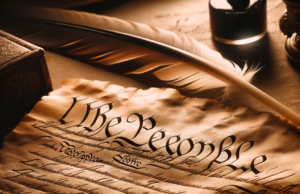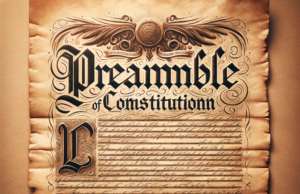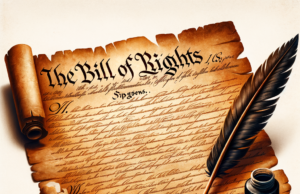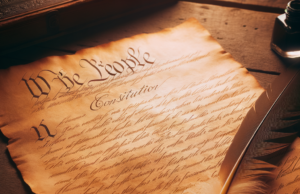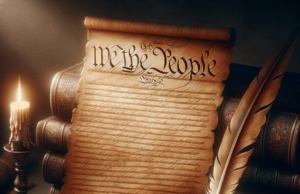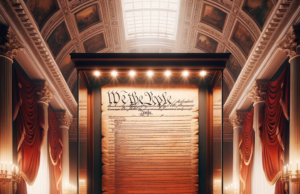
Melville Weston Fuller was an American lawyer and jurist who served as the Chief Justice of the United States from 1888 until his death in 1910. Born on February 11, 1833, in Augusta, Maine, Melville Fuller was the eldest of eight children. Fuller’s father, Frederick A. Fuller, was a lawyer and a prominent figure in national Democratic politics. His mother, Catherine Weston Fuller, was the daughter of a prominent lawyer and judge, Daniel Weston.
Fuller grew up in a family that placed enormous emphasis on education. He was homeschooled until the age of ten, when he entered a public school in Augusta. His parents recognized Fuller’s intellectual talents early on, and they encouraged him to pursue his studies with great zeal. As a result, Fuller enrolled in Bowdoin College in Brunswick, Maine, at the age of 16, where he graduated with high honors in 1853.
After graduating from Bowdoin, Fuller moved to Chicago to begin his legal career. He was admitted to the bar in 1855 and quickly gained a reputation as an excellent trial lawyer. He became a partner in the law firm of Scammon and McCagg in 1856, where he remained until 1867. During this time, Fuller also served as a lecturer at the law school at Northwestern University.
Fuller’s reputation as a lawyer continued to grow in Chicago, and he soon became involved in the city’s politics. In 1863, he was appointed as a commissioner to revise the city’s charter. He also became a leader of the Democratic Party in Illinois and was a delegate to several Democratic National Conventions.
In 1888, President Grover Cleveland nominated Fuller to be the Chief Justice of the United States Supreme Court. The Senate confirmed him by a vote of 41 to 20, and he was sworn in on October 8, 1888. Fuller served as Chief Justice for 22 years, until his death in 1910.
During his time on the Supreme Court, Fuller presided over several important cases. One of the most famous of these was Plessy v. Ferguson, which he decided in 1896. Plessy v. Ferguson upheld the constitutionality of racial segregation, and it set the stage for the “separate but equal” doctrine that would be used to justify segregation for decades to come.
Fuller’s decision in Plessy v. Ferguson is often criticized today as a low point in the Court’s history. In his opinion, Fuller wrote that “separate but equal” facilities for African Americans did not violate the Constitution’s guarantee of equal protection under the law. This decision allowed states to continue to segregate public facilities and services based on race, a practice that would not be overturned until the Court’s decision in Brown v. Board of Education in 1954.
Despite this controversial decision, Fuller’s tenure as Chief Justice was marked by several important decisions that expanded the rights of corporations and strengthened the power of the federal government. In United States v. E.C. Knight Co. (1895), for example, Fuller wrote the majority opinion in a case that limited the scope of the Sherman Antitrust Act. In Northern Securities Co. v. United States (1904), he again wrote for the majority, upholding the government’s power to regulate large corporations.
Fuller also presided over several cases involving labor unions and workers’ rights. In Holden v. Hardy (1898), for example, he wrote the majority opinion upholding a Utah law that limited the hours that coal miners could work. In Lochner v. New York (1905), however, Fuller and the Court struck down a New York law that regulated the hours that bakers could work, finding that it violated the liberty of contract protected by the Constitution.
Throughout his time on the Supreme Court, Fuller was known for his judicial restraint and his respect for precedent. He believed that judges should interpret the law narrowly, and he often sought to avoid making sweeping changes to established legal doctrines. This conservatism served him well during a period of rapid social and economic change, and it helped to establish the Court’s legitimacy as an impartial arbiter of the law.
Fuller was also widely respected for his personal qualities. He was a devout Episcopalian and a devoted family man. He was known for his kindness, his sense of humor, and his ability to work harmoniously with his colleagues on the bench. Despite his sharp differences with some of his fellow justices, Fuller was able to maintain cordial relationships with nearly all of them.
Fuller’s health began to decline in the early 1900s, and he suffered a major stroke in 1908. Despite this setback, he continued to serve on the Court until his death in 1910. He is remembered today as one of the most important and influential Chief Justices in American history. His legacy includes a long list of important decisions, as well as his tireless efforts to promote the rule of law and to uphold the Constitution.
Melville Fuller assumed the role of Chief Justice of the U.S. Supreme Court in 1888, after the death of Morrison Waite who was operating as Chief Justice at the time. He ideally was not the first candidate for Chief Justice, as the former Ambassador of Great Britain was rumored to be the first runner-up.
The official announcement of Fuller as Chief of Justice was mentioned in the summer of 1888. Many important decisions were set in place while Melville Fuller served as Chief Justice. One is most notable as the Separate but Equal Clause.
The case of Cadwell vs. Texas in 1891 was one major instance where the famous phrase “Equal Justice Under Law” was put into effect. Although the phrase had been in existence since its development in 1832, Melville Fuller used this phrase to express his views of “equal and impartial justice”. Under his ruling, the controversial phrase “separate but equal”, stemming from the equal and impartial justice clause, brought justification to segregation which originated in the South.
The controversial case of Plessy v. Ferguson was a defining moment for the Separate but Equal Clause. The Court ruled that segregation was not discrimination and facilities that were separated by race did not violate the Constitution so long as the facilities were equal.
Another case that complied with the “separate but equal” beliefs of Melville Fuller was the 1904 Gonzalez v. Williams case. Under this case, the Court ruled that Puerto Ricans were not considered aliens and could not be denied entry into the United States. Although citizenship of Puerto Ricans was not automatically determined, Melville Fuller did recognize Puerto Rico as an extended U.S. territory, allowing those who originated from Puerto Rico to stay in the United States without fear of being deported.
Under the direction of Fuller, the Court also addressed the income tax law declaring some measures of applied taxes unconstitutional. This was the ruling in the Pollack v. Farmers Loan & Trust Co case. During this case, the Supreme Court ruled that the additional taxes applied to interest, dividends, and rent stemming from the Income State Tax Act of 1984 unconstitutional. In other cases, he ruled against applied taxes to telegraph messages and applied rules regarding interstate commerce.
During the term of Melville Fuller as Chief Justice, the economy of the United States was under full growth. This growth leads Melville Fuller to make many decisions regarding taxes and interstate commerce for business practices. The Separate but Equal Clause helped establish the functions of segregation. His rulings set the standards for each State to comply with separate but equal practices when setting up facilities.
Many thought highly of the implementations set by Fuller. He was thought of as a skillful chief leader who was energetic and fair. Fuller was even involved in cases providing rulings in the disputes between other countries. His ruling helped direct a nation that was once filled with racism and unfair practices into a realm of more acceptance. He also helped establish better business practices for the growing United States economy.












